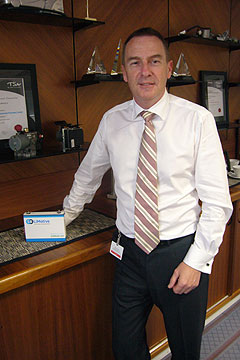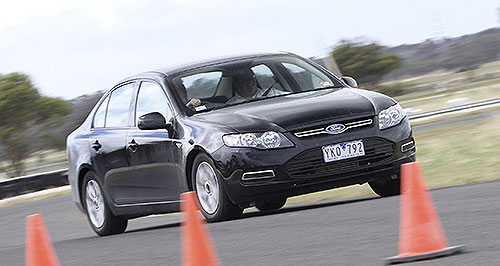News - General News - TechnologyAutonomous cars soonWitch car: Modern technology enables the potential of cars that can avoid any obstacles. Bosch says virtually self-driving cars are now feasible and will soon be with us20 Jul 2012 By IAN PORTER UPDATED: 23/07/2012AUTONOMOUS cars – vehicles that do not need constant driver input – could be a reality now and will be commercially viable in only a few years, according to the giant Bosch auto parts group. Bosch Australia president Gavin Smith made the startling statement at a function celebrating the 20th anniversary of the creation of Bosch Australia’s chassis systems control division. Mr Smith said the development of electrical control for many of the functions now done by the driver meant an autonomous car was a reality. Systems needed by an autonomous car would include distance sensing, lane-departure technology, cruise control, automatic braking, GPS direction, ESC, automatic parking, driver drowsiness detection and stop sign recognition, all of which have been developed. At the function, Mr Smith revealed a prototype of a system that will automatically prevent vehicles, especially high-standing SUVs, from reversing over people and things. Speaking afterwards, Mr Smith said that the efforts by Google to design a driverless car had shown that an autonomous car is a practical prospect. “If you’ve got the data, the sensing, the cameras and the radar – enough technology in the car – you can avoid collisions,” he said.  Left: Bosch Australia president Gavin Smith. Left: Bosch Australia president Gavin Smith.“When you look at it (the Google car), it was perhaps big and clunky. But they managed to put something together using available technology and they got it to run reliably for an extended period of time without incident.” Mr Smith said all that was required now was some development of various systems to enable them to be packaged efficiently in a vehicle. “That tells you, if you then take that and develop it in scale to automotive standards, where things get reduced down to application-specific ICs (the size of a fingernail) instead of using a laptop, the integration of the car is not that far away.” The new accident prevention system unveiled at the function is called Back Over Avoidance (BOA) and was fitted to a Ford Territory. It taps into the vehicle’s stability control system which, of course, is able to automatically apply the brakes. The BOA system applies the brakes when the ultrasound sensor detects something in the vehicle’s path. Mr Smith said a variety of more expensive sensors could be used to achieve the same result. The prototype uses a basic ultrasound system integrated to the ESC system. It does not need a reversing camera, although both can be fitted. Mr Smith said the ultrasound-based system was “fairly basic” and there would be times when a different approach might be used. “However, there are circumstances where a system like this is not so effective and you might want to use a thermal imaging camera, so you actually make sure that what it is you are going to brake to avoid isn’t just a cardboard box on the road.” Alternative sensing systems include single and dual video cameras. Dual cameras would provide triangulation, which would allow the system to determine whether the obstruction was moving out of the way. A keen Ducati rider, Mr Smith also said he hoped one of the next big steps forward in road safety would come with the widespread – and potentially mandatory – adoption of ABS brakes on motorcycles, which to date has generally been restricted to high-end models. He cited a 2009 study by the Swedish Road Administration that found ABS can prevent 38 per cent of all accidents resulting in physical injury, and 48 per cent of all serious and fatal accidents. He also said an investigation conducted by Bosch based on the German accident database GIDAS concluded that a quarter of all motorcycle accidents in which people are killed or injured could be avoided if ABS was fitted as standard, while a further third of these accidents “would at the very least have less serious outcomes if anti-lock protection was used”. “ABS can be applied to mass-market motorcycles and, when you see the statistics about the lives that can be saved, there is no other accident category where any tech can have such a big impact,” he said. “It can be applied to mass-market motorcycles and, when you seen the statistics about the lives that can be saved, there is no other accident category where any tech can have such a big impact. “In the motorcycle category, 48 per cent of deaths and serious injuries can be avoided, according to Swedish road authorities. “Motorcycle ABS is a no-brainer, and it would have an imperceptible impact on the price of a motorcycle to the end consumer.” The Bosch Australia chassis control systems division is responsible for the design and development of ABS and ESC systems fitted to all locally made cars. The Australian operation is also doing work across Asia in support of other Bosch operations.  Read more |
Click to shareGeneral News articlesResearch General News Motor industry news |
















Facebook Twitter Instagram